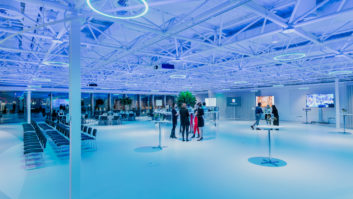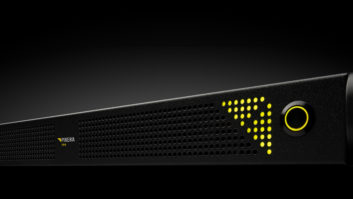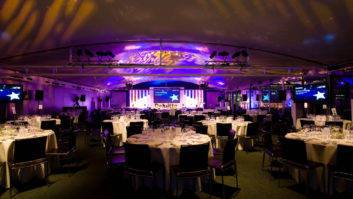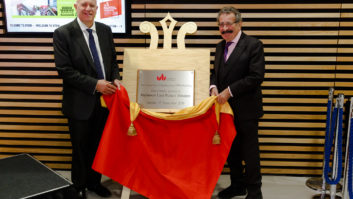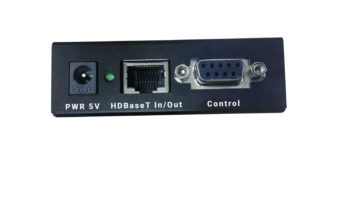The latest market report from AVIXA points to exciting times for the stadia and sports venue sector. Christopher Lavelle, senior director of development Europe for AVIXA, gives AVTE readers a heads-up on the trends and business opportunities ahead
Following the huge impact and success of VAR (video assistant referees) at the 2018 FIFA World Cup, the clubs of the English Premier League have agreed in principle to implement the technology for the 2019/20 season. This about-turn – it was not too long ago (just a few months) that the most watched league in the world was set against introducing VAR – is proof positive that clubs, broadcasters and administrators are serious about technology in sport and the benefits it delivers. Whether it is a viewer watching a live broadcast streamed from across the globe, or a supporter watching a replay of an incident inside a stadium, technology is now a key element to enhancing the fan experience.
While live broadcasts and replays have their place, many fans enjoy the on-pitch drama and off-pitch experience that comes with being present in the stadium. While it might be assumed that it is just traditional diehard supporters in attendance, research paints a more interesting and progressive picture: Stadium occupancy is at record levels*; more females are in attendance; crowds are increasingly more diverse; and fans are getting younger.
During an AVIXA-hosted roundtable discussion at the recent ALSD International Conference in London, Lisa Knights, group head of communications at Ashton Gate Stadium in Bristol, drew the link between these trends and the consumer expectations that are important for driving fan engagement for stadia: “Everyone is trying to attract a younger fan base” she says, and one way to appeal to this demographic is by having screens in a stadium as younger fans expect it. Knights also pointed out that large displays didn’t detract from the experience on the pitch (as might be expected) but in fact, having everyone focused on a display at the same time, “adds to the collective live experience.”
Another panellist, Craig Flindall chief operating officer at Warwickshire County Cricket Club, discussed how the advantages of audiovisual technology are also being recognised in a sport as traditional and conservative as cricket. He pointed out that over the last eight to ten years, the sport has begun to develop a real focus around guest experience and that audiovisual technology is absolutely integral to this change. Previously, Flindall said, other leaders in the sport insisted they didn’t want to embrace the technology, preferring to make the sport itself the centre of the experience. But for Flindall, especially with the long dwell times that cricket offers (up to five days, in the case of a Test Match), that moment has passed. With younger generations and their expectations of technology, “We’ve got to use that [technology] to enhance the sport and experience and make it the best that it can be,” he said.
An enhanced in-stadium experience, as well as having to compete with other sports venues and fans’ ever-advancing home entertainment systems, is driving sports venue executives to invest in audiovisual solutions at previously unprecedented levels. According to AVIXA’s newly released 2018 Market Opportunity Analysis Report (MOAR) focused on sports venues, the sector is expected to produce $27.7 billion in pro-AV revenue in 2018 worldwide and grow at a healthy rate in the next five years. The report also investigates the opportunities and challenges for providers of pro-AV solutions and technologies in this space.
For anyone in the audiovisual business, “this is a market to watch,” says Sean Wargo, senior director of market intelligence at AVIXA. He goes on to add, “It’s an exciting space for AV providers to work in: stadium executives are determined to bring the wow factor to outdo other stadiums, so they are motivated to embrace advanced technologies like augmented reality, virtual reality, and interactive displays.” While this is exciting, it’s also worth noting that “investments in standard AV technologies, such as lighting, audio, and security and surveillance, take priority.”
The report provides more detail about how the competition from the at-home viewing experience is driving audiovisual innovation in venues because fans want an electrifying atmosphere, with the entertainment beginning even before they’ve passed through the gates. Basically, fans don’t want to miss any action when they leave their seats for refreshments. These expectations are being met with innovative audiovisual technology, and venue executives are exploring the cutting edge of technology to further enhance their space.
For example, as Peter Hansen, AVIXA economics analyst, notes, “Nearly 100 percent of venue executives surveyed plan to upgrade their audio equipment in the next 12 months.” These investments are intended to ensure fans can hear announcers during the game, which, according to the MOAR report, fans listed as its most important audiovisual role. Further, video displays and video projection are the next most popular audiovisual purchases, and finally the report indicates that investments in digital signage will increase the most significantly over the next year.
These trends mark out the stadia and sports venue market as an exciting and vibrant sector, and between market expansion, unmet needs, and the proportion of end users utilising competitive RFPs (requests for proposals) to find new suppliers, there is plenty of room for smart, well-informed companies to thrive in this space.
*Premier League Season Review 2014/15, p18-19
To learn more about AVIXA’s MOAR report on sports venues, visit: https://www.avixa.org/
